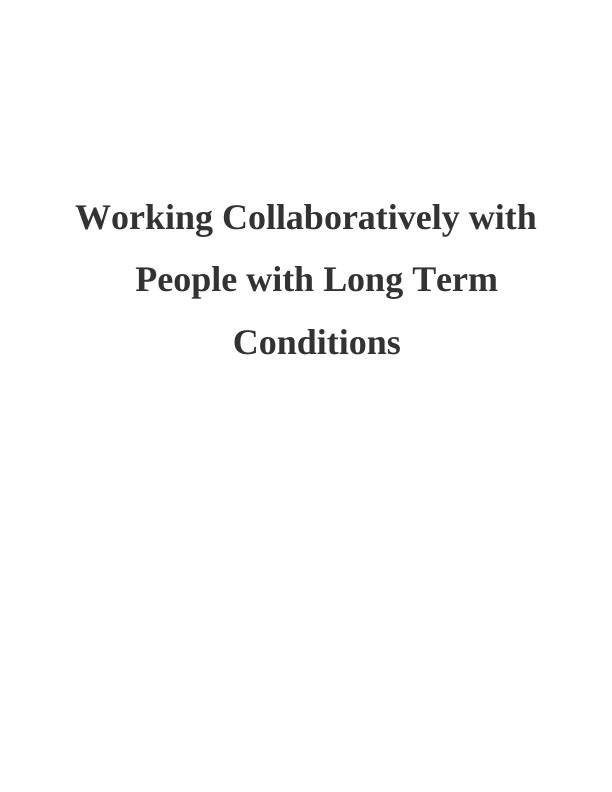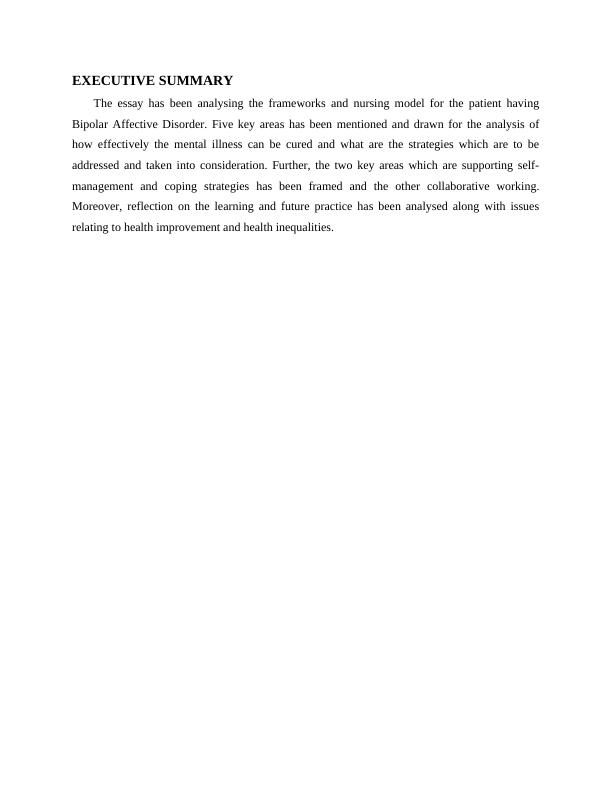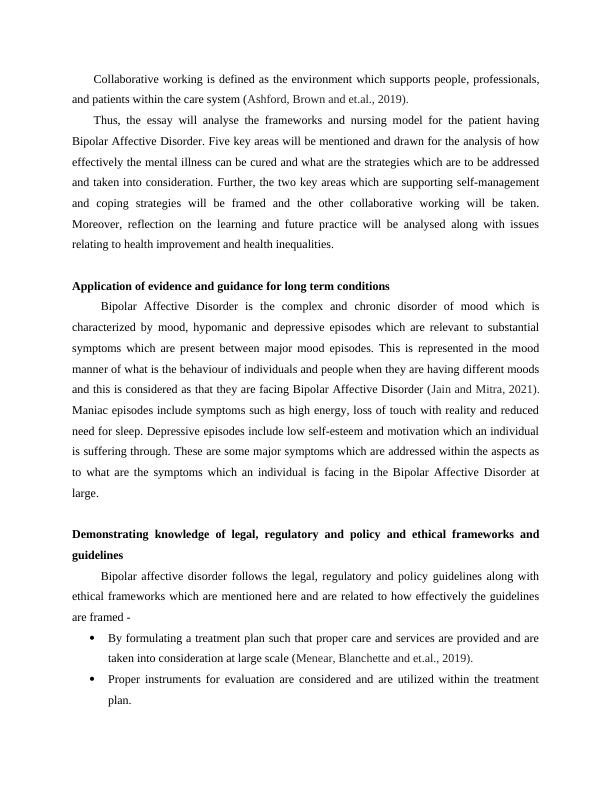Working Collaboratively with People with Long Term Conditions
Added on 2023-06-11
12 Pages3159 Words286 Views
End of preview
Want to access all the pages? Upload your documents or become a member.
Effects of Bipolar Disorder on Cognition
|7
|1995
|78
Public Health: Inequalities, Monitoring, and Recommendations
|10
|2451
|77
Mental Health Case Study Assessment: Inquiry-Based Learning Approach
|5
|883
|81
Mental Health Case Study Analysis for Nursing Students
|11
|3331
|179
NUR2300 - Nursing priority and chronic health conditions
|9
|2456
|52
Understanding Mental Health
|10
|2456
|270




